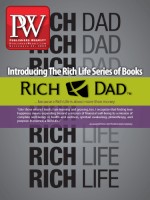Ah, 1978. It was a year of invention—Velcro was born. And a year of transition, which saw the last German-made Volkswagen Beetle roll off the assembly line, in Emden. It was also the year the Literary Agents & Scouts Centre, known as the LitAg, debuted at the Frankfurt Book Fair.
Over the 35 years since its introduction, the rights trade conducted from the LitAg center at Frankfurt has become the backbone of the international publishing world, generating buzz and more than a few million-dollar blockbuster deals. And for decades, it was all done on paper, with just a smattering of tables, some clunky old phones, a lot of booze, and plenty of ashtrays.
“Just like the publishing industry itself, the LitAg has changed dramatically over the last 35 years,” says Frankfurt’s LitAg director, Riky Stock. “Today, alongside traditional literary agents and scouts, there are digital publishers, transmedia properties, licensing arms of international publishing groups, audio-licensing agencies, all of whom continue to expand the reach of storytelling through the LitAg.”
In celebration of 35 years, the Frankfurt Book Fair has been collecting remembrances on its Web site in the run up to this year’s fair—and like a rerun of the Six Million Dollar Man, they can make you wistful for the good old days. U.K.-based agent Tanja Howarth recalls explaining a “book auction” to a TV crew in 1978—decked out in a miniskirt and boots. Agent Philip Sane recalls the atmosphere in the 1980s LitAg center as, well, intoxicating. “In the old days it was quite common to serve drinks to visiting clients and publishers,” he recalls. “At that time, people drank quite a lot during the book fairs.”
Sane goes on to tell the story of one German editor who, after a long day of at the fair, climbed drunkenly into a taxi, and handed the driver a slip of paper with his hotel address. He then fell asleep and did not wake up until the next morning—outside of his office in Hamburg. “What he had given the taxi driver was his business card.”
All agree that the rights business has changed mightily over the years. Sane recalls how, in 1984, Danish publisher Jørgen Lademann bought the Danish rights to Man’s Best Friend, by Gray Joliffe and Peter Mayle, over his “standard whiskey” at his annual Monday morning appointment. “Using the telephone—an old-fashioned one, no mobile telephones existed at that time—I got an acceptance of the offer,” Sane recalls. “Then Jørgen talked to his home office in Copenhagen from our telephone, ordered the translation and the first printing of some 50,000 copies.”
Today, the LitAg center offers Wi-Fi, a cafeteria, a juice bar, and a copy shop; and public and private spaces are now available for those big meetings. And though the “book of the fair” is largely a thing of the past, the rights trade is booming. Last year, the LitAg center expanded and drew record participation. And this year, it’ll set another record—fair officials say all 448 tables are sold out for the second year in a row, and 619 agents and scouts have registered. In 1978, there were 38 tables.
The evolution and growth of the LitAg center is yet another example of how the Frankfurt Book Fair, in an era when digital was supposed to disintermediate us all, continued to thrive. Through a global economic recession and a digital revolution, the fair hasn’t missed a step. It remains a vibrant, vital, annual pilgrimage for publishers, and has even expanded its reach.
This year’s fair—set to run October 9–13—promises to build on last year’s strong show. From the prefair digital conference, CONTEC, to its multimedia StoryDrive conference, which brings together books, film, games, and other media, to an impressive schedule of discussions with industry leaders on stages scattered throughout the exhibit hall, not to mention “digital hot spots” where users can play with new gadgets, or get a demo, Frankfurt can aptly be described as a media fair. But as one Frankfurt official vowed, it will always be the Frankfurt Book Fair.



 Volume 260
Issue 38
09/23/2013
Volume 260
Issue 38
09/23/2013





